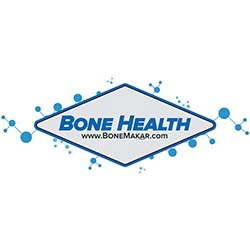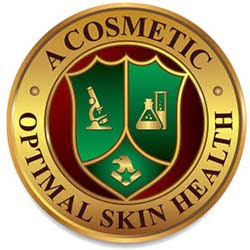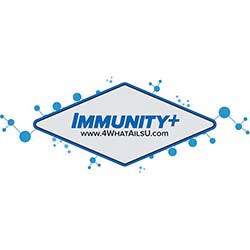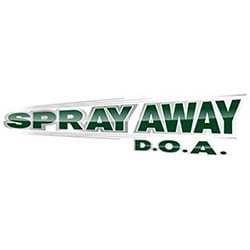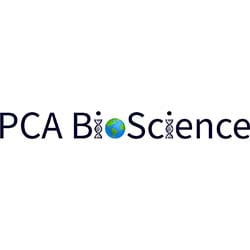Until now, there has been no new class of antibiotics in the past 30 years. The reason is that the cost of FDA regulations in money are so high and the time necessary is so long that traditional medical companies will not take the risk. They have uniformly believed there would be no return on their investment.
However, in the last several years Dr. Johnson has discovered a chemical found in fruits and vegetables that has antimicrobial properties. The reagent is protocatechuic acid (PCA). It is common to the human diet. PCA is the primary metabolite of the dyes that make blueberries blue and cherries red. PCA is the reason these fruits are considered nutritious. Furthermore, PCA is inherent in the human microbiomes as it is produced by the bacteria in the human large bowel. It is found throughout nature. PCA is classified as a nutraceutical; a food supplement. As such it has been designated as safe by the FDA as a food flavoring additive. You can and do eat it daily.
It is not unprecedented that a plant or natural product has medicinal properties. Aspirin is found in tree bark. Digitalis, the heart medicine came from a flower called foxglove. Penicillin was originally found as a mold, perhaps common to us today as seen on bread.
PCA Source: PCA was originally extracted from plant material, but presently is manufactured biochemically. The present method eliminates the heavy metals common to that harvested from plant extraction and insures purity.
Anti-Oxidant: Anti-oxidants are known to be the foundation of all health. PCA is a powerful antioxidant; 10X more powerful than vitamin E.
Anti-Inflammation: Inflammation is now known to be the foundation of all disease. PCA is a powerful anti-inflammatory reagent.
High Level Research: Although PCA is a nutraceutical it was developed with the same criteria one would use for a pharmaceutical.
Broad Spectrum Antibiotic: It was first discovered that PCA was a broad-spectrum antibiotic. A US patent was granted based upon this science. 9,498,413; Antimicrobials and methods of use thereof for wound healing. November 22, 2016. This was the parent patent showing broad-spectrum antibiotic properties and wound healing acceleration.
The following two publications were based upon the foundational research:
Jalali, Omid; Best, Molly; Wong, Alison; Schaeffer, Brett; Bauer, Brendon; Johnson, Lanny. Protocatechuic Acid as a Topical Antimicrobial for Surgical Skin Antisepsis. Preclinical Investigations. JBJS Open Access: July-September 2020 – Volume 5 – Issue 3 – p e19.00079 doi: 10.2106/JBJS.OA.19.00079.
Jalali, Omid; Best, Molly; Wong, Alison; Schaeffer, Brett; Bauer, Brendon; Johnson, Lanny. Reduced Bacterial Burden of the Skin Surrounding the Shoulder Joint Following Topical Protocatechuic Acid Application Results of a Pilot Study. JBJS Open Access d 2020:e19.00078. http://dx.doi.org/10.2106/JBJS.OA.19.00078
Note: Originally and before antibiotics, all bacteria were single floating organisms, called planktonic. The introduction of antibiotics caused the bacteria to develop resistance by mutation plus forming colonies covered with a plastic-like barrier called biofilm. This is why there is resistance to present-day antibiotics.
Biofilm Destroyer: It was then discovered by independent contract laboratory studies that metal and cloth coated with the PCA crystals would destroy the biofilms of MRSA and Pseudomonas on contact.
A US patent was granted; 10,004,705: Antimicrobials and the methods of use. 7/26/2018.
Many Patents: Multiple other patents were granted for the anti-microbial use in medicine and surgery, including control of contamination in the food industry.
COVID-19: In early 2020, COVID-19 emerged in the USA. This prompted Dr. Johnson to investigate the potential for PCA against the SARS CoV2 virus.
Anti-viral History: PCA has been reported to be therapeutically effective against several viral diseases.
H9N2:
Ou C, Shi N, Yang Q, Zhang Y, Wu Z, et al. (2014) Protocatechuic Acid, a Novel Active Substance against Avian Influenza Virus H9N2 Infection. PLoS ONE 9(10): e111004. doi:10.1371/journal.pone.0111004.
Guo Y, Zhang Q, Zuo Z, et al. Protocatechuic acid (PCA) induced a better antiviral effect by immune enhancement in SPF chickens. Microb Pathog. 2018;114:233-238. doi:10.1016/j.micpath.2017.11.068
Infectious Bursal Disease Virus:
Ou CB, Pan Q, Chen X, Hou N, He C. Protocatechuic acid, a new active substance against the challenge of avian infectious bursal disease virus [published correction appears in Poult Sci. 2012 Oct;91(10):2722. Pang, Q [corrected to Pan, Q]]. Poult Sci. 2012;91(7):1604-1609. doi:10.3382/ps.2011-02069
Hepatitis B:
Jiyang Li1, Hai Huang1, Meiqing Feng, Wei Zhou, Xun long, ShiPei Zhou. In vitro and in vivo anti-hepatitis B virus activities of a plant extract from Geranium carolinianum L.
https://doi.org/10.1016/j.antiviral.2008.03.001
Avian Influenza Virus:
Ou C, Shi N, Yang Q, Zhang Y, Wu Z, et al. (2014) Protocatechuic Acid, a Novel Active Substance against Avian Influenza Virus H9N2 Infection. PLoS ONE 9(10): e111004. doi:10.1371/journal.pone.0111004
Influenza A and B:
Hils J, May A, Sperber M, Klocking R, Helbig B, et al. (1986) Inhibition of several strains of influenza virus type A and B by phenolic polymers. Biomed Biochim Acta 45: 1173–1179.
Xiao-Qing Dai 1 , Wen-Tao Cai 1 , Xiao Wu, Yong Chen ⁎, Feng-Mei Han. Protocatechuic acid inhibits hepatitis B virus replication by activating ERK1/2 pathway and down-regulating HNF4α and HNF1α in vitro. Life Sciences Volume 180, 1 July 2017, Pages 68-74.
Lu, F., Tseng, S., Li, M. et al. In vitro anti-influenza virus activity of synthetic humate analogues derived from protocatechuic acid. Arch. Virol. 147, 273–284 (2002). https://doi-org.proxy1.cl.msu.edu/10.1007/s705-002-8319-5
HSV-2:
Hassan, Sherif T. S.; Švajdlenka, Emil; Berchová-Bímová, Kateřina. Hibiscus sabdariffa L. and Its Bioactive Constituents Exhibit Antiviral Activity against HSV-2 and Anti-enzymatic Properties against Urease by an ESI-MS Based Assay. Molecules. Vol. 22 Issue 5, p. 722, 2017.
PCA’s Anti-Viral Nature: PCA has several properties that create its antiviral nature and therapeutic potential;
- physical crystal shape.
- low pH.
- anti-protease.
- blocking agent.
- cellular and hormonal immunity.
- anti-inflammation.
- tyrosinase inhibitor.
- anti-thrombosis factors.
Independent Contract Laboratory Studies: It was learned that a coating of PCA crystals on metal, plastic, and material from an N-95 facial mask caused the immediate inactivation of the SARS CoV2 virus.
Practical Applications: Based upon the above independent research the following practical applications were apparent that would be an adjunct to present mitigation practices and methods.
- Sanitizer for skin
- Sanitizer coating for hard surfaces
- Sanitizer coating of face masks
- Sanitizer for nose and mouth
FDA and EPA applications: Since PCA is a nutraceutical, the various applications can be marketed absent the usual regulations. However, because PCA was researched as a pharmaceutical EPA and FDA applications are in process.
Disclaimer: The information herein is solely for that purpose. The practical applications are not FDA approved. Furthermore, these products are not intended to make a diagnosis. These products are not intended to treat any condition.

